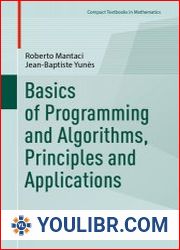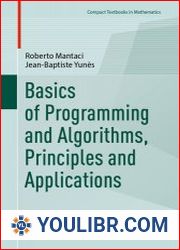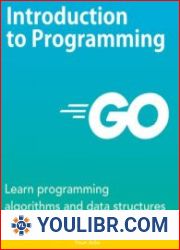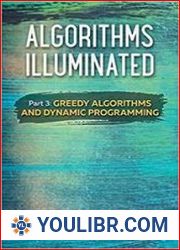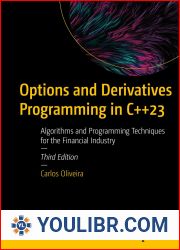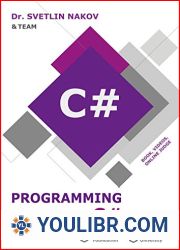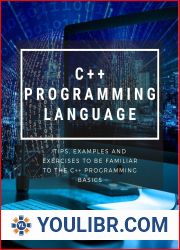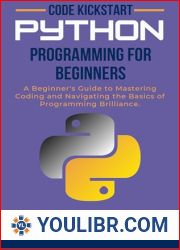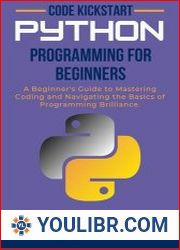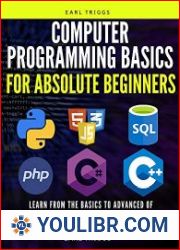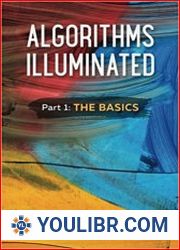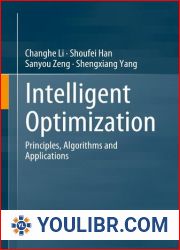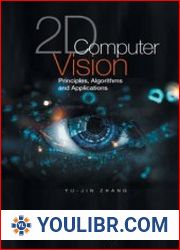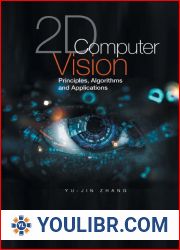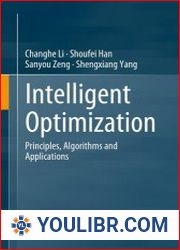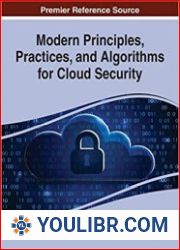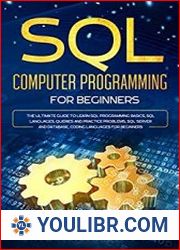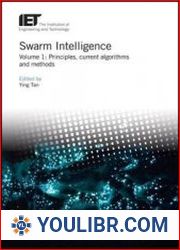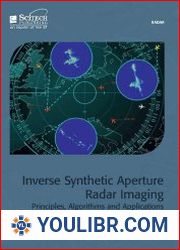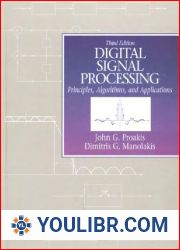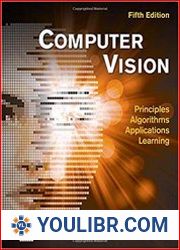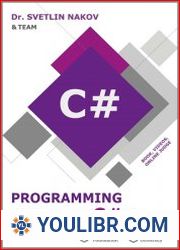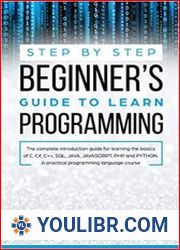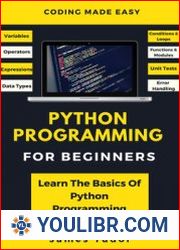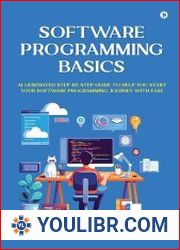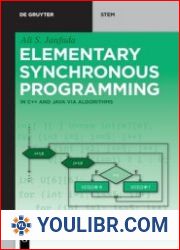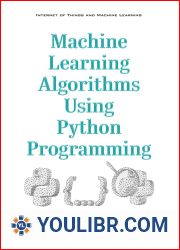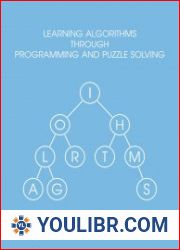
BOOKS - Basics of Programming and Algorithms, Principles and Applications

Basics of Programming and Algorithms, Principles and Applications
Author: Roberto Mantaci, Jean-Baptiste Yunes
Year: 2024
Format: PDF | EPUB
File size: 27.7 MB
Language: ENG
Year: 2024
Format: PDF | EPUB
File size: 27.7 MB
Language: ENG
This textbook offers an introduction to topics in algorithms and programming with Python. It is originally intended for mathematical students not sufficiently aware about these Computer Science fields seeking a deeper understanding. It addresses fundamental questions on how to analyze the performance of an algorithm and equips readers with the skills to implement them using Python. The textbook is organized in two parts. Part I introduces Python Programming offering a solid foundation to Python essentials. Topics covered include first steps in Python programming, programs, functions and recursion, data structures. Part II shifts focus to Algorithms and covers topics such as algorithm performance, recursion, the sorting problem, trees as data structures, etc. Writing programs is a hard task that involves many different skills that are not necessarily part of the expertise acquired by undergraduate and even graduate students in scientific fields other than computer science. Here we will focus on: algorithmic, algorithmic analysis and programming (not necessarily in that precise order). Applications and programming considerations will be based on the Python programming language. Python is freely available on every mainstream platform and widely used. Python is a multi-paradigm high-level language. It is used by many people over the world, and scientists in many fields; it is not intended to computerists only. It is a very general-purpose programming language provided with many extensions allowing to solve lots of very different problems. This is why we chose it.
Book Title: Basics of Programming and Algorithms Principles and Applications Introduction: The rapid evolution of technology has led to an increasing demand for professionals who understand the fundamentals of programming and algorithms, and their applications in various fields. As a writer, I aim to provide an in-depth description of the book "Basics of Programming and Algorithms Principles and Applications" to highlight its significance in today's technological landscape. This textbook offers an introduction to topics in algorithms and programming with Python, catering to mathematical students seeking a deeper understanding of these Computer Science fields. The book is divided into two parts, providing a comprehensive foundation in Python essentials and algorithmic analysis. Part I: Python Programming In this section, readers will embark on a journey to learn the basics of Python programming, starting with first steps in Python, programs, functions, and recursion. Data structures are also covered, laying the groundwork for a solid understanding of programming concepts. This part of the book is designed to equip readers with the skills necessary to implement programs using Python, ensuring a thorough grasp of the language and its capabilities. Part II: Algorithms and Performance Analysis Here, the focus shifts to algorithms and covers essential topics such as algorithm performance, recursion, sorting, and data structures. Readers will gain insights into how to analyze the efficiency of an algorithm, enabling them to select the most appropriate approach for their specific needs. The text emphasizes the importance of understanding the performance of an algorithm, making it a crucial aspect of the learning process. Book Basics of Programming and Algorithms Principles and Applications Introduction: Быстрое развитие технологий привело к возрастающему спросу на профессионалов, понимающих основы программирования и алгоритмов, и их приложения в различных областях. Как писатель, я стремлюсь дать подробное описание книги «Основы программирования и алгоритмы Принципы и приложения», чтобы подчеркнуть ее значение в современном технологическом ландшафте. Этот учебник предлагает введение в темы алгоритмов и программирования на Python, обслуживая студентов-математиков, ищущих более глубокое понимание этих областей компьютерных наук. Книга разделена на две части, обеспечивая всестороннюю основу в Python essentials и алгоритмическом анализе. Часть I: Программирование на Python В этом разделе читатели отправятся в путешествие для изучения основ программирования на Python, начиная с первых шагов на Python, программ, функций и рекурсии. Структуры данных также охвачены, закладывая основу для твердого понимания концепций программирования. Эта часть книги призвана вооружить читателей навыками, необходимыми для реализации программ с использованием Python, обеспечив доскональное усвоение языка и его возможностей. Часть II: Алгоритмы и анализ производительности Здесь фокус смещается на алгоритмы и охватывает важные темы, такие как производительность алгоритмов, рекурсия, сортировка и структуры данных. Читатели получат представление о том, как проанализировать эффективность алгоритма, что позволит им выбрать наиболее подходящий подход для своих конкретных потребностей. В тексте подчеркивается важность понимания производительности алгоритма, что делает его важнейшим аспектом процесса обучения. download pdf file descargar archivo pdf скачать файл PDF 下载 pdf 文件 descarregar ficheiro pdf download pdf file pdf dosyasını indir PDF-Datei herunterladen télécharger le fichier pdf pdf 파일 다운로드 להוריד קובץ PDF Scarica il file pdf PDFファイルをダウンロード تنزيل ملف pdf pobierz plik pdf
Ce tutoriel offre une introduction aux thèmes des algorithmes et de la programmation en Python. À l'origine, il est destiné aux étudiants en mathématiques qui ne sont pas assez conscients de ces domaines de l'informatique à la recherche d'une meilleure compréhension. Il aborde des questions fondamentales sur la façon d'analyser les performances de l'algorithme et d'armer les lecteurs de compétences pour les mettre en œuvre avec Python. Le manuel est organisé en deux parties. La partie I représente Python Programming, offrant la base de Python essentiel. Parmi les thèmes traités figurent les premières étapes de la programmation sur Python, les programmes, les fonctions et la récursion, la structure des données. La partie II se concentre sur les algorithmes et couvre des sujets tels que les performances de l'algorithme, la récursion, le problème du tri, les arbres comme les structures de données, etc. L'écriture de programmes est une tâche complexe qui implique de nombreuses compétences différentes qui ne font pas nécessairement partie de l'expérience acquise par les étudiants et même les étudiants de troisième cycle dans des domaines scientifiques autres que l'informatique. Ici, nous nous arrêterons sur : l'algorithme, l'analyse algorithmique et la programmation (pas nécessairement dans un ordre aussi précis). Les applications et les questions de programmation seront basées sur le langage de programmation Python. Python est disponible gratuitement sur toutes les plateformes de masse et est largement utilisé. Python est un langage multiparadigmal de haut niveau. Il est utilisé par de nombreuses personnes dans le monde entier, et par des scientifiques dans de nombreux domaines ; il n'est pas destiné uniquement aux informaticiens. C'est un langage de programmation très polyvalent, avec de nombreuses extensions qui permettent de relever de nombreux défis. C'est pour ça qu'on l'a choisi.
Этот учебник предлагает введение в темы алгоритмов и программирования на Python. Первоначально он предназначен для студентов-математиков, которые недостаточно осведомлены об этих областях компьютерных наук, ищущих более глубокое понимание. Он обращается к фундаментальным вопросам о том, как анализировать производительность алгоритма и вооружает читателей навыками их реализации с помощью Python. Учебник организован из двух частей. Часть I представляет Python Programming, предлагая основательную основу Python essentials. Среди рассматриваемых тем - первые шаги программирования на Python, программы, функции и рекурсия, структуры данных. Часть II смещает фокус на «Алгоритмы» и охватывает такие темы, как производительность алгоритма, рекурсия, проблема сортировки, деревья как структуры данных и т. д. Написание программ - это сложная задача, которая включает в себя множество различных навыков, которые не обязательно являются частью опыта, приобретенного студентами и даже аспирантами в научных областях, отличных от информатики. Здесь мы остановимся на: алгоритмическом, алгоритмическом анализе и программировании (не обязательно в таком точном порядке). Приложения и вопросы программирования будут основаны на языке программирования Python. Python свободно доступен на каждой массовой платформе и широко используется. Python - мультипарадигмальный высокоуровневый язык. Он используется многими людьми по всему миру, и учеными во многих областях; он не предназначен только для компьютерщиков. Это очень универсальный язык программирования, снабженный множеством расширений, позволяющих решать множество самых разных задач. Вот почему мы его выбрали.
Este tutorial oferece uma introdução em temas de algoritmos e programação em Python. Originalmente, ele é destinado a estudantes de matemática que não têm conhecimento suficiente sobre estas áreas de ciências da computação que buscam uma compreensão mais profunda. Ele recorre a questões fundamentais sobre como analisar o desempenho do algoritmo e equipar os leitores com habilidades de implementação com Python. O livro é organizado em duas partes. A parte I representa Python Programing, oferecendo uma base básica Python essentals. Entre os temas abordados estão os primeiros passos da programação em Python, programas, funções e recorte, estruturas de dados. A parte II desloca o foco para «Algoritmos» e abrange temas como desempenho de algoritmo, recorsividade, problema de triagem, árvores como estruturas de dados, etc. Escrever programas é uma tarefa complexa, que inclui muitas habilidades diferentes que não necessariamente fazem parte da experiência adquirida por estudantes e até alunos de pós-graduação em áreas científicas diferentes da informática. Aqui vamos parar em análise algoritmica, algoritmática e programação (não necessariamente na ordem exata). Os aplicativos e questões de programação serão baseados na linguagem de programação Python. Python está disponível livremente em cada plataforma de massa e muito usado. Python é uma linguagem multiparadigmal de alto nível. É usado por muitas pessoas em todo o mundo e por cientistas em muitas áreas; Não é apenas para informáticos. É uma linguagem de programação muito versátil, com muitas extensões que permitem muitas tarefas diferentes. É por isso que o escolhemos.
Este tutorial ofrece una introducción a los temas de algoritmos y programación en Python. Originalmente está diseñado para estudiantes de matemáticas que no están suficientemente conscientes de estas áreas de las ciencias de la computación que buscan una comprensión más profunda. Aborda preguntas fundamentales sobre cómo analizar el rendimiento del algoritmo y equipa a los lectores con habilidades para implementarlas con Python. El tutorial está organizado en dos partes. Parte I presenta Python Programming, ofreciendo una base sólida de Python essentials. Entre los temas tratados se encuentran los primeros pasos de programación en Python, programas, funciones y recursión, estructuras de datos. La Parte II cambia el enfoque a «Algoritmos» y cubre temas como el rendimiento del algoritmo, recursión, problema de clasificación, árboles como estructuras de datos, etc. Escribir programas es una tarea compleja que implica muchas habilidades diferentes que no necesariamente forman parte de la experiencia adquirida por estudiantes e incluso estudiantes de posgrado en campos científicos distintos de la informática. Aquí nos detendremos en: análisis algorítmico, algorítmico y programación (no necesariamente en este orden preciso). Las aplicaciones y cuestiones de programación se basarán en el lenguaje de programación Python. Python está disponible libremente en todas las plataformas de masas y es ampliamente utilizado. Python es un lenguaje multiparadigmático de alto nivel. Es utilizado por muchas personas en todo el mundo, y por científicos en muchos campos; no es solo para los informáticos. Es un lenguaje de programación muy versátil, provisto de muchas extensiones que permiten resolver una gran variedad de problemas. Por eso lo elegimos.
This textbook offers an introduction to topics in algorithms and programming with Python. It is originally intended for mathematical students not sufficiently aware about these Computer Science fields seeking a deeper understanding. It addresses fundamental questions on how to analyze the performance of an algorithm and equips readers with the skills to implement them using Python. The textbook is organized in two parts. Part I introduces Python Programming offering a solid foundation to Python essentials. Topics covered include first steps in Python programming, programs, functions and recursion, data structures. Part II shifts focus to Algorithms and covers topics such as algorithm performance, recursion, the sorting problem, trees as data structures, etc. Writing programs is a hard task that involves many different skills that are not necessarily part of the expertise acquired by undergraduate and even graduate students in scientific fields other than computer science. Here we will focus on: algorithmic, algorithmic analysis and programming (not necessarily in that precise order). Applications and programming considerations will be based on the Python programming language. Python is freely available on every mainstream platform and widely used. Python is a multi-paradigm high-level language. It is used by many people over the world, and scientists in many fields; it is not intended to computerists only. It is a very general-purpose programming language provided with many extensions allowing to solve lots of very different problems. This is why we chose it.
Dieses Tutorial bietet eine Einführung in die Themen Algorithmen und Programmierung in Python. Es richtet sich zunächst an Mathematikstudenten, die sich in diesen Bereichen der Informatik nicht ausreichend auskennen und ein tieferes Verständnis suchen. Es befasst sich mit grundlegenden Fragen, wie die Leistung eines Algorithmus analysiert werden kann, und stattet die Leser mit den Fähigkeiten aus, diese mit Python umzusetzen. Das Lehrbuch ist in zwei Teile gegliedert. Teil I stellt Python Programming vor und bietet eine solide Grundlage für Python essentials. Zu den behandelten Themen gehören die ersten Schritte der Python-Programmierung, Programme, Funktionen und Rekursion, Datenstrukturen. Teil II verschiebt den Fokus auf „Algorithmen“ und behandelt Themen wie Algorithmusleistung, Rekursion, Sortierproblem, Bäume als Datenstrukturen etc. Das Schreiben von Programmen ist eine komplexe Aufgabe, die viele verschiedene Fähigkeiten beinhaltet, die nicht unbedingt Teil der Erfahrung sind, die Studenten und sogar Doktoranden in anderen wissenschaftlichen Bereichen als der Informatik erworben haben. Hier konzentrieren wir uns auf: algorithmische, algorithmische Analyse und Programmierung (nicht unbedingt in einer so genauen Reihenfolge). Anwendungen und Programmierfragen basieren auf der Programmiersprache Python. Python ist auf jeder Massenplattform frei verfügbar und weit verbreitet. Python ist eine multiparadigmatische Hochsprache. Es wird von vielen Menschen auf der ganzen Welt und von Wissenschaftlern in vielen Bereichen verwendet; Es ist nicht nur für Informatiker gedacht. Dies ist eine sehr vielseitige Programmiersprache, die mit vielen Erweiterungen ausgestattet ist, mit denen Sie viele verschiedene Probleme lösen können. Deshalb haben wir ihn gewählt.
Ce tutoriel offre une introduction aux thèmes des algorithmes et de la programmation en Python. À l'origine, il est destiné aux étudiants en mathématiques qui ne sont pas assez conscients de ces domaines de l'informatique à la recherche d'une meilleure compréhension. Il aborde des questions fondamentales sur la façon d'analyser les performances de l'algorithme et d'armer les lecteurs de compétences pour les mettre en œuvre avec Python. Le manuel est organisé en deux parties. La partie I représente Python Programming, offrant la base de Python essentiel. Parmi les thèmes traités figurent les premières étapes de la programmation sur Python, les programmes, les fonctions et la récursion, la structure des données. La partie II se concentre sur les algorithmes et couvre des sujets tels que les performances de l'algorithme, la récursion, le problème du tri, les arbres comme les structures de données, etc. L'écriture de programmes est une tâche complexe qui implique de nombreuses compétences différentes qui ne font pas nécessairement partie de l'expérience acquise par les étudiants et même les étudiants de troisième cycle dans des domaines scientifiques autres que l'informatique. Ici, nous nous arrêterons sur : l'algorithme, l'analyse algorithmique et la programmation (pas nécessairement dans un ordre aussi précis). Les applications et les questions de programmation seront basées sur le langage de programmation Python. Python est disponible gratuitement sur toutes les plateformes de masse et est largement utilisé. Python est un langage multiparadigmal de haut niveau. Il est utilisé par de nombreuses personnes dans le monde entier, et par des scientifiques dans de nombreux domaines ; il n'est pas destiné uniquement aux informaticiens. C'est un langage de programmation très polyvalent, avec de nombreuses extensions qui permettent de relever de nombreux défis. C'est pour ça qu'on l'a choisi.
Этот учебник предлагает введение в темы алгоритмов и программирования на Python. Первоначально он предназначен для студентов-математиков, которые недостаточно осведомлены об этих областях компьютерных наук, ищущих более глубокое понимание. Он обращается к фундаментальным вопросам о том, как анализировать производительность алгоритма и вооружает читателей навыками их реализации с помощью Python. Учебник организован из двух частей. Часть I представляет Python Programming, предлагая основательную основу Python essentials. Среди рассматриваемых тем - первые шаги программирования на Python, программы, функции и рекурсия, структуры данных. Часть II смещает фокус на «Алгоритмы» и охватывает такие темы, как производительность алгоритма, рекурсия, проблема сортировки, деревья как структуры данных и т. д. Написание программ - это сложная задача, которая включает в себя множество различных навыков, которые не обязательно являются частью опыта, приобретенного студентами и даже аспирантами в научных областях, отличных от информатики. Здесь мы остановимся на: алгоритмическом, алгоритмическом анализе и программировании (не обязательно в таком точном порядке). Приложения и вопросы программирования будут основаны на языке программирования Python. Python свободно доступен на каждой массовой платформе и широко используется. Python - мультипарадигмальный высокоуровневый язык. Он используется многими людьми по всему миру, и учеными во многих областях; он не предназначен только для компьютерщиков. Это очень универсальный язык программирования, снабженный множеством расширений, позволяющих решать множество самых разных задач. Вот почему мы его выбрали.
Este tutorial oferece uma introdução em temas de algoritmos e programação em Python. Originalmente, ele é destinado a estudantes de matemática que não têm conhecimento suficiente sobre estas áreas de ciências da computação que buscam uma compreensão mais profunda. Ele recorre a questões fundamentais sobre como analisar o desempenho do algoritmo e equipar os leitores com habilidades de implementação com Python. O livro é organizado em duas partes. A parte I representa Python Programing, oferecendo uma base básica Python essentals. Entre os temas abordados estão os primeiros passos da programação em Python, programas, funções e recorte, estruturas de dados. A parte II desloca o foco para «Algoritmos» e abrange temas como desempenho de algoritmo, recorsividade, problema de triagem, árvores como estruturas de dados, etc. Escrever programas é uma tarefa complexa, que inclui muitas habilidades diferentes que não necessariamente fazem parte da experiência adquirida por estudantes e até alunos de pós-graduação em áreas científicas diferentes da informática. Aqui vamos parar em análise algoritmica, algoritmática e programação (não necessariamente na ordem exata). Os aplicativos e questões de programação serão baseados na linguagem de programação Python. Python está disponível livremente em cada plataforma de massa e muito usado. Python é uma linguagem multiparadigmal de alto nível. É usado por muitas pessoas em todo o mundo e por cientistas em muitas áreas; Não é apenas para informáticos. É uma linguagem de programação muito versátil, com muitas extensões que permitem muitas tarefas diferentes. É por isso que o escolhemos.
Este tutorial ofrece una introducción a los temas de algoritmos y programación en Python. Originalmente está diseñado para estudiantes de matemáticas que no están suficientemente conscientes de estas áreas de las ciencias de la computación que buscan una comprensión más profunda. Aborda preguntas fundamentales sobre cómo analizar el rendimiento del algoritmo y equipa a los lectores con habilidades para implementarlas con Python. El tutorial está organizado en dos partes. Parte I presenta Python Programming, ofreciendo una base sólida de Python essentials. Entre los temas tratados se encuentran los primeros pasos de programación en Python, programas, funciones y recursión, estructuras de datos. La Parte II cambia el enfoque a «Algoritmos» y cubre temas como el rendimiento del algoritmo, recursión, problema de clasificación, árboles como estructuras de datos, etc. Escribir programas es una tarea compleja que implica muchas habilidades diferentes que no necesariamente forman parte de la experiencia adquirida por estudiantes e incluso estudiantes de posgrado en campos científicos distintos de la informática. Aquí nos detendremos en: análisis algorítmico, algorítmico y programación (no necesariamente en este orden preciso). Las aplicaciones y cuestiones de programación se basarán en el lenguaje de programación Python. Python está disponible libremente en todas las plataformas de masas y es ampliamente utilizado. Python es un lenguaje multiparadigmático de alto nivel. Es utilizado por muchas personas en todo el mundo, y por científicos en muchos campos; no es solo para los informáticos. Es un lenguaje de programación muy versátil, provisto de muchas extensiones que permiten resolver una gran variedad de problemas. Por eso lo elegimos.
This textbook offers an introduction to topics in algorithms and programming with Python. It is originally intended for mathematical students not sufficiently aware about these Computer Science fields seeking a deeper understanding. It addresses fundamental questions on how to analyze the performance of an algorithm and equips readers with the skills to implement them using Python. The textbook is organized in two parts. Part I introduces Python Programming offering a solid foundation to Python essentials. Topics covered include first steps in Python programming, programs, functions and recursion, data structures. Part II shifts focus to Algorithms and covers topics such as algorithm performance, recursion, the sorting problem, trees as data structures, etc. Writing programs is a hard task that involves many different skills that are not necessarily part of the expertise acquired by undergraduate and even graduate students in scientific fields other than computer science. Here we will focus on: algorithmic, algorithmic analysis and programming (not necessarily in that precise order). Applications and programming considerations will be based on the Python programming language. Python is freely available on every mainstream platform and widely used. Python is a multi-paradigm high-level language. It is used by many people over the world, and scientists in many fields; it is not intended to computerists only. It is a very general-purpose programming language provided with many extensions allowing to solve lots of very different problems. This is why we chose it.
Dieses Tutorial bietet eine Einführung in die Themen Algorithmen und Programmierung in Python. Es richtet sich zunächst an Mathematikstudenten, die sich in diesen Bereichen der Informatik nicht ausreichend auskennen und ein tieferes Verständnis suchen. Es befasst sich mit grundlegenden Fragen, wie die Leistung eines Algorithmus analysiert werden kann, und stattet die Leser mit den Fähigkeiten aus, diese mit Python umzusetzen. Das Lehrbuch ist in zwei Teile gegliedert. Teil I stellt Python Programming vor und bietet eine solide Grundlage für Python essentials. Zu den behandelten Themen gehören die ersten Schritte der Python-Programmierung, Programme, Funktionen und Rekursion, Datenstrukturen. Teil II verschiebt den Fokus auf „Algorithmen“ und behandelt Themen wie Algorithmusleistung, Rekursion, Sortierproblem, Bäume als Datenstrukturen etc. Das Schreiben von Programmen ist eine komplexe Aufgabe, die viele verschiedene Fähigkeiten beinhaltet, die nicht unbedingt Teil der Erfahrung sind, die Studenten und sogar Doktoranden in anderen wissenschaftlichen Bereichen als der Informatik erworben haben. Hier konzentrieren wir uns auf: algorithmische, algorithmische Analyse und Programmierung (nicht unbedingt in einer so genauen Reihenfolge). Anwendungen und Programmierfragen basieren auf der Programmiersprache Python. Python ist auf jeder Massenplattform frei verfügbar und weit verbreitet. Python ist eine multiparadigmatische Hochsprache. Es wird von vielen Menschen auf der ganzen Welt und von Wissenschaftlern in vielen Bereichen verwendet; Es ist nicht nur für Informatiker gedacht. Dies ist eine sehr vielseitige Programmiersprache, die mit vielen Erweiterungen ausgestattet ist, mit denen Sie viele verschiedene Probleme lösen können. Deshalb haben wir ihn gewählt.







